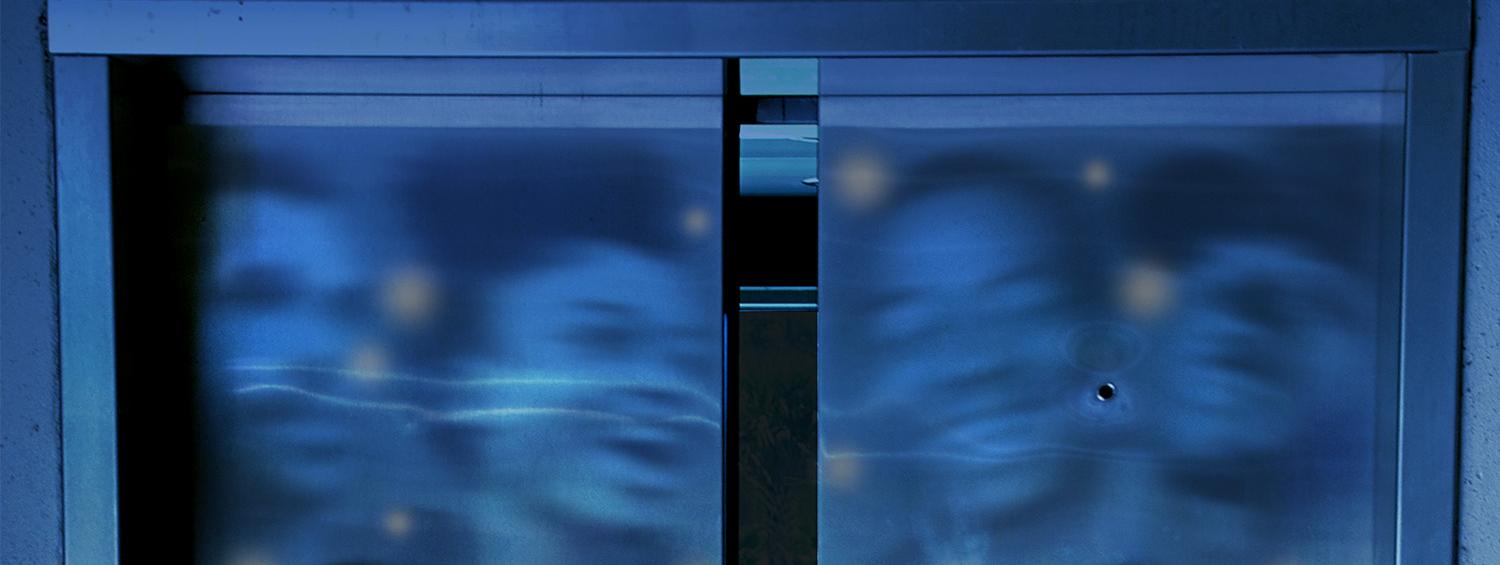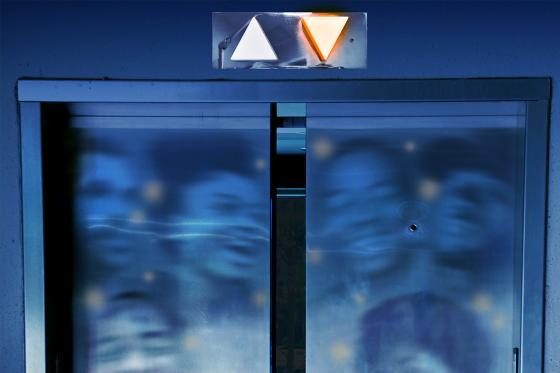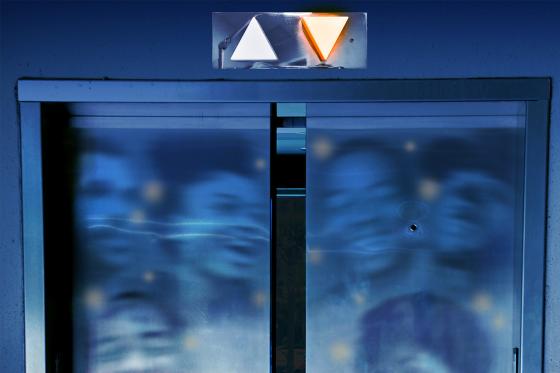As part of the program note for Long Way Down, I conducted an interview with Dahlak Brathwaite and Khiyon Hursey, the writers of the show, about their musical inspiration for the show, the musicality, and adapting the novel for the stage. You can find that interview pasted below:
*Please note this interview has been edited for length and clarity*
Ellen: The book Long Way Down by Jason Reynolds was written in staccato narrative verse. Can you talk about the rhythm of the language on the page and your vision for musicalizing it?
Dahlak: My first love and passion is hip-hop and MCing. I think that's kind of the skill I've been developing the longest. But, in that, I've also made a name for myself as a spoken word poet, so that's also very much in my arsenal. I've grown up and developed as an artist listening to a lot of poetry, and just grew enamored about the way that words, phrases, and sentences could be structured and restructured to create vast possibilities of meaning. And so, in reading Jason's work, it did feel like it came from a culture that I knew. If we were gonna make a musical out of this, hip-hop was at the center of it, because poetry was the centerpiece.
Hip-hop embraces all genres of music, and so the Black American music tradition is actually all part of it as well: all the things that feed into hip-hop, soul, gospel, funk, blues, and R&B. I think all of these elements are part of it… At some moments, we just incorporate them as hip-hop does. And that's always my impulse. I think where I land on the spectrum of the Black American music tradition depends on the project, but this one felt very centered in that time and in that culture.
Khiyon: I have a memory of reading the book and going, "obviously, each ghost has a song," and just thinking "how does this lend itself to being musicalized?" And even the way the book is written, it feels rhythmic. It just made a lot of sense for the music to live in a more rhythm-centered space. And I think that the next obvious step [from] that would be rap music, hip-hop music.
Ellen: Speaking of rhythm: in the casting process, you both talk about actors finding the rhythm in the songs and their complexity. Could you talk about how you found ways to help actors experience the rhythm and story in the same way that you would as creators? As you conceive of all these different characters, how do you relate each of them to your larger themes and the overall musical world you’re creating?
Dahlak: I think my goal generally, as I'm writing, particularly hip-hop and rap, is; how do you tell the story? How do you play with language? And then how do you entertain and satisfy people's senses of rhythm? … I think it also was vital to the project that wordplay was characteristic of, if not a few of our characters, at least Will, our protagonist. So in playing with language, I was playing with a sort of storytelling aspect and a character detail. But I [also] consider, as I do with rap, how much an audience can process, and what is important for them to process. I'm really trying to be specific about which plot points are told through song, in a slower rhythm, in a more catchy rhythm, more repetitive rhythm, that makes the information easier to process. Then: where do we potentially sacrifice some information just to do what spectacle does for the eye, but instead for the ear.…sonic impressions that really excite and also train people on how to listen if there's a lot of dense information, and they're struggling to capture it all. Then if the next moment you slow it down and you widen that space between words and the space between sections, they're already primed to listen to it in a certain way.
In terms of actors, I feel like I've learned so much in terms of the skill of rap. I've always taken it for granted a little bit, and I really appreciate the rappers as musicians who are these word percussionists. So to be very careful and intentional about timing, about flow, about where they fit into the pocket of the groove… and also how they accentuate and still act within that, which is another muscle, became very, very, important. The balance of trying to act something while beholden to a very intentional rhythm is a less common skill than I previously thought.
Khiyon: I think we have a really exciting, talented group of actors. And this music is so specific that you have to come in with certain tools in your tool belt, as far as a really solid understanding of rhythm, and pocket and flow. A lot of that comes from: have you grown up listening to this sort of music? Is this music in your body, as far as R&B, hip-hop? There are notes of gospel in this score. I think it's interesting to be bringing those forms to musical theater. And it does require musical theater chops; [and] it does require a different sort of skill set that we don't really see in theater. It was a challenging, yet exciting, exhilarating process finding all of these amazing individuals who have both the musical theater technique, but also a really great sense of rhythm and flow that they have been developing and living with from a young age.
Ellen: You've mentioned many different genres that you touched on in this show. Did you have any particular artists that were your musical inspirations going into this project?
Dahlak: Yeah. [I] actually started making a Long Way Down playlist…there was a lot of Notorious BIG, the early stuff, particularly, “Life After Death”. There’s a song on “Life After Death” called What’s Beef, which is a kind of a vital part of the conversation and the language that's being used by Jason in the book about beef, and the slang, and how that's approached and reckoned with. Then I also put the Ten Crack Commandments [on the playlist]. [in the song]there's so many orders and codes and rules. And so, in this Ten Crack Commandments, which is utilized in Hamilton as well, this list and this litany of do's and don'ts. I was just feeding off of that.
Also Biggie (Notorious B.I.G) and Tupac are mentioned in the book as [the character] Shawn's favorite rappers. [So] t became kind of a period piece in that sense of: now we're thinking of the kids who would have Biggie and Pac as their favorite rappers. We're talking about kids that were around my age and grew up and came up in the late 90s, early 2000s. I know specifically thinking about [the character]Buck's flow, I really thought about Notorious B.I.G, and the way that he constructs lyrics there.
But I don't think we limited ourselves. Even if we were kind of flirting with that time period, we weren't limiting ourselves to that. So there are elements of trap and this triplet flow that we hear championed by [present day hip-hop artists] Migos or Kendrick.
Then I also think of Sondheim and just what he does rhythmically. He really inspired me to experiment and feel like I could go full-on. The way that his music has been embraced by the theater community made me feel like, "oh, folks are ready for challenging rhythmic possibilities." So that made me wanna push in ways that I don't think I'd necessarily heard in rap before. But I was really trying to find new pockets, new grooves, new rhythms.
I also realized how influenced I am in general by Michael Jackson. And we clearly got "King of Pop," but there were just other moments where I was just like, "that's a very Michael thing."
Khiyon: Dahlak kind of covered it all, but I guess, thinking about some of the stuff I wrote, Usher. There are some really nice R&B moments that feel like very modern R&B. And some of the stuff that Dahlak has written reminds me of classic R&B, 70s R&B.
Box Office: 301.924.3400
Open Wednesday - Sunday: 12:00 PM - 6:00 PM
Save 15% on Weeknight Performances
Use the code WEBSITE15 at checkout to save 15% on Wednesday, Thursday, and Friday night performances of Hello, Dolly! through January 2*.
*All sales final. Not valid on previously purchased tickets. Cannot be combined with any other offer. Limit 4 tickets per household. 1 order per household. Only valid on weeknight performances of Hello, Dolly! through December 19. Offer valid while supplies last.
Purchase Now





